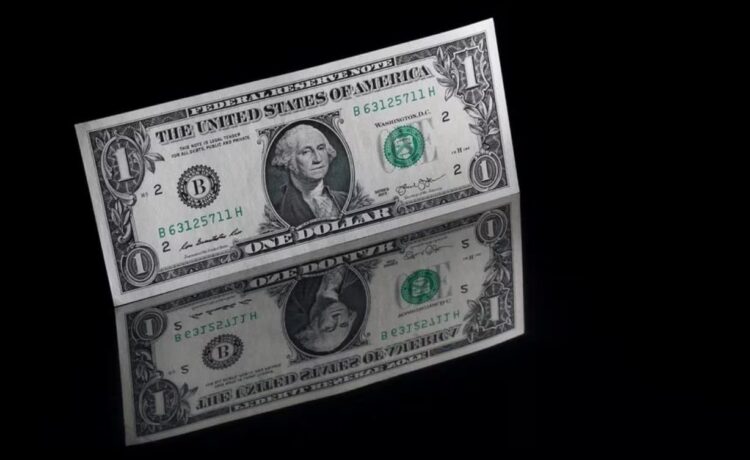By Miranda Xafa
In 1944 the victorious countries of World War II were invited to Bretton Woods, New Hampshire to decide the postwar world economic order and the architecture of the international monetary system. They created organizations that promote international cooperation and open markets on the basis of generally accepted rules (IMF, World Bank, World Trade Organization). The liberal world order that led to post-war global prosperity replaced the economic nationalism that turned the crash of 1929 into a deep, protracted recession with the imposition of tariffs and successive devaluations. At the heart of the system was the dollar, which remains the dominant currency today. Much of world trade is invoiced and paid for in dollars, even between third countries, and the dollar dominates international financial transactions.
The dollar’s role as a global trading and reserve currency has traditionally been considered an “exorbitant privilege” for America. High demand for U.S. Treasury bonds from central banks and foreign investors is driving down America’s borrowing costs. In addition, the U.S. earns a higher yield on their investments abroad than they pay on their obligations, which allows them to consume more than they produce, to some extent, without accumulating external debt. Just consider that the widespread acceptance of the dollar as a means of payment and savings has led to $1 trillion in cash flowing out of America, an obligation for which America pays zero interest.
Instead of an exorbitant privilege, the Trump administration considers the global role of the dollar an unwelcome burden on America. It believes that the benefit to Wall Street and fund managers worldwide is outweighed by a loss to American workers and farmers. In his recent article “A Users Guide to Restructuring the Global Trading System,” the president of the Council of Economic Advisors Stephen Miran argues that America’s defense umbrella and the dollar’s role as a global reserve currency are public goods for which it should be rewarded. One way is to impose tariffs on U.S. imports to increase public revenues. Another way is to impose taxes/fees on central banks that hold foreign exchange reserves in U.S. government bonds. The tariffs could also be used as a negotiating tool for an international “Mar-a-Lago” agreement, named after Trump’s Florida mansion where it will be negotiated, aimed at a depreciation of the dollar. The rationale is that the perpetual inflows of capital into America from its trading partners, reflecting the global demand for foreign exchange reserves, make the dollar chronically overvalued and cause a current account deficit.
Under the threat of tariffs, fees, and withholding America’s defense protections, the agreement would provide for massive sales of foreign exchange reserves held by central banks in dollars, targeting a depreciation of the dollar of the order of 20 per cent. To prevent the sell-off from causing a rise US bond yields, central banks would also be asked/obliged to exchange their remaining bonds for long-term US government bonds, e.g. 50-year bonds, in order to compress the corresponding yields due to high demand. Long-term bonds, however, are subject to very large fluctuations when interest rates change. Here Miran offers a carrot: To persuade central banks to take on interest rate risk, they would be given the option to borrow from the Federal Reserve an amount of dollars equal to the face value of their bonds, even if their market value is lower. If, for example, the market value of 50-year bonds drops to 70, central banks will be able to borrow 100 from the Fed in order to obtain liquidity without recording losses. Finally, the devaluation of the dollar is expected to slightly increase inflation, but this trend would be offset by the Trump administration’s deregulation of the energy market (“drill baby drill”).
The possibility of such an agreement has been of great concern to investors in recent months, as it suggests that the Trump tariffs are only the first step in a broader reassessment of the international financial architecture to align more closely with America’s interests. Trump himself has argued that the strength of the dollar has made American manufacturing uncompetitive and fueled trade deficits. He also has referred to the possible replacement of U.S. government bonds held by foreign central banks with perpetual bonds, which amounts to a restructuring of U.S. debt. Obviously, capital markets will react very negatively to any intervention that targets capital movements, something that Miran understands (p. 35): “There is good reason to be more cautious about changes in dollar policy than we are about changes in tariffs.” Though unlikely, it cannot be excluded that the turmoil which began as a trade war will turn into a more dangerous war of capital.
This is not the first time that the American political class has conceived the idea of using tariffs to achieve a devaluation of the dollar. It was the basic idea behind the “Nixon shock” in August 1971, when the U.S. administration abolished the convertibility of dollars into gold, devalued the dollar from $35 to $38 per ounce of gold, and imposed 10 per cent tariffs until the European countries revalued their currencies in order to reduce America’s current account deficit. At the time, many believed that the dollar’s role as a reserve currency would end. The same happened after the global financial crisis that erupted in 2007 and culminated in 2008 with the bankruptcy of Lehman Brothers. Surprisingly, the dollar strengthened as investors sought safe haven in the U.S. bond market. By contrast, in the wake of Trump’s “reciprocal” tariffs, fund managers reacted to the chaotic trade policy by selling U.S. assets and causing a simultaneous decline in the stock market, the bond market, and the dollar. Large foreign investors are demanding a premium due to the once-unthinkable risk that the U.S. would confiscate capital in some way, and warn that the dollar’s role as a safe haven for global capital is threatened by the Trump administration’s erratic policymaking. The ongoing back-and-forth on tariffs, the misguided intimidation of friendly countries like Canada, and the undermining of institutions—particularly the Fed’s independence—undermine America’s credibility as a trading partner, as an ally, as an investment destination, and as a law-abiding country.
The best way to shrink the current account deficit is to shrink the U.S. fiscal deficit, which would lower interest rates and improve America’s competitiveness without resorting to unorthodox measures that would undermine the international status of the dollar. The attractiveness of $30 trillion U.S. Treasury market is unparalleled. No other currency offers the liquidity of the U.S. capital markets. The euro is a currency without a state. The eurozone lacks a single capital market, while the bonds of the largest country, Germany, amount to just €1.3 trillion. China has made deals with Russia and Saudi Arabia to invoice and pay for bilateral trade in its own currency, but the yuan is not widely accepted because exchange controls and the absence of an independent justice system limit market liquidity and investor confidence. As for cryptocurrencies, the idea that they might substitute for the dollar is laughable. The dollar will therefore remain the dominant currency because there are no alternatives. Over time, however, we may end up with a less attractive “multi-polar” system, where the euro, Swiss franc, yuan and yen play a greater role.
Miranda Xafa is member of the Academic Board of the Centre for Liberal Studies (KEFIM). The article is published from the Blog of the Cyprus Economic Society (https://cypruseconomicsociety.org/blog/blog-posts/).





